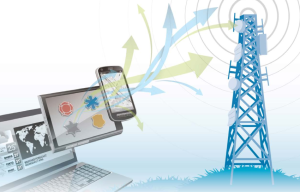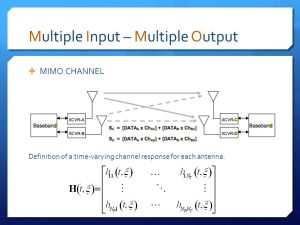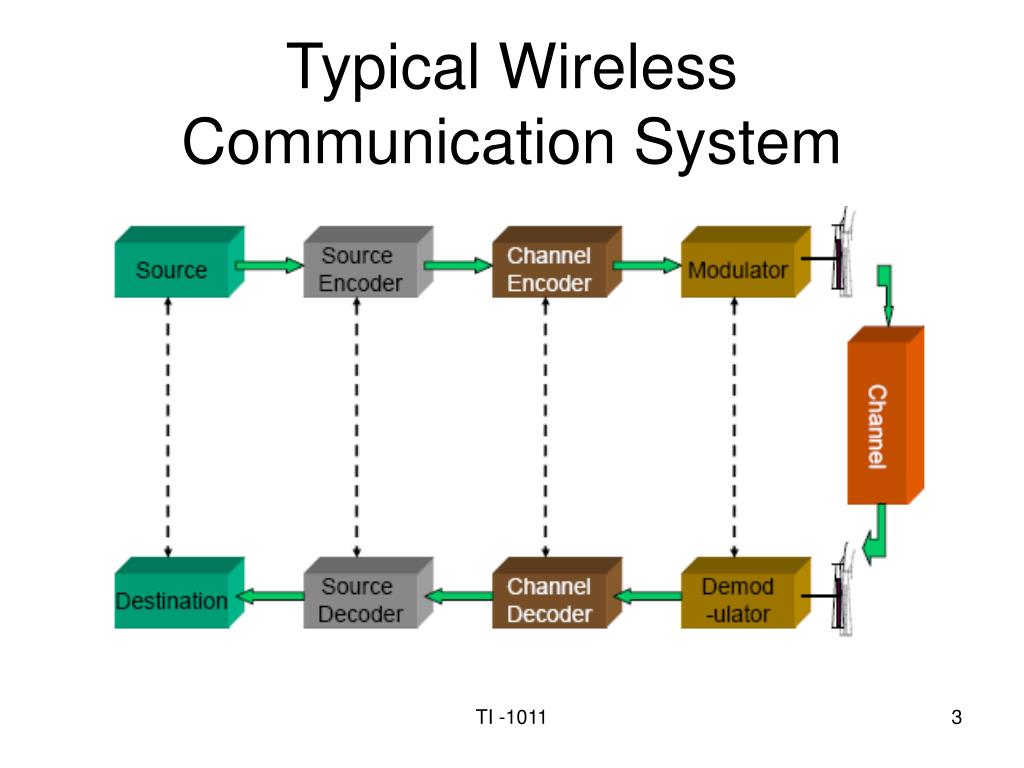Wireless communication systems have become a ubiquitous part of our daily routines, facilitating the use of various devices like smartphones and laptops to connect to the internet and communicate with others. The technology behind these systems has evolved significantly, with multiple input and multiple output (MIMO) technology leading the way in enhancing their efficiency.

But did you know that there are different types of wireless systems? There’s Single Input Single Output (SISO), which uses a single antenna for both transmission and reception but is limited in capacity. Then there’s Single Input Multiple Output (SIMO), which reduces interference from other sources by using multiple antennas for reception but only one for transmission. However, SIMO may not always provide significant improvements over SISO when it comes to data rate or coverage.
On the other hand, MISO is similar to SIMO but uses multiple antennas for transmission instead of reception. All these factors need to be taken into account when designing efficient wireless communication systems that can meet user demands while staying within budget constraints.
In conclusion, understanding the differences between MIMO, SIMO, SISO, and MISO can prove perplexing at times. Nonetheless crucial when designing optimal wireless communication networks capable of meeting user requirements under varying environmental conditions impacting signal propagation characteristics over time during usage cycles throughout lifespan durations expected from deployment contexts envisioned initially before implementation decisions were made based on available resources allocated towards building out infrastructure supporting those needs identified early stages planning processes undertaken ahead rollout schedules set forth project management timelines established beforehand carefully considering all factors involved weighing tradeoffs competing priorities against each other burstily as new information becomes available periodically causing sudden changes requiring reevaluation adaptation over time ensuring continued system performance metrics achieved despite uncertainties encountered unpredictably along operational pathways traversed by end-users demanding seamless connectivity experiences delivered consistently without disruption or degradation experienced negatively affecting quality service levels provided overall satisfaction customers expect upheld maintained high standards excellence expected enterprise entities providing services users relying upon heavily day today basis habitually accustomed accustomed to enjoying receive when utilizing technologies offered.
– Importance of multiple input and multiple output (MIMO) technology
Contents
- 1 – Importance of multiple input and multiple output (MIMO) technology
- 2 – Overview of different types of wireless systems
- 3 Single Input Single Output (SISO) Systems
- 4 – Definition of SISO systems
- 5 – Explanation of how SISO systems work
- 6 – Advantages and disadvantages of SISO systems
- 7 Single Input Multiple Output (SIMO) Systems
The intricacies of modern wireless communication systems are vast, but one technology that stands out is MIMO. This crucial aspect employs multiple antennas at the transmitter and receiver to not only improve data throughput, range, and signal reliability but also transmit and receive several streams of data simultaneously over a single frequency band.

But what makes MIMO so advantageous? One key advantage is its ability to provide higher data rates than traditional SISO systems by transmitting more bits per second per hertz of bandwidth thanks to advanced antenna techniques. Furthermore, it can mitigate fading effects caused by multipath propagation through spatial diversity using multiple antennas.
However, it’s important to note two types of wireless communication systems: MISO and MIMO. While MISO employs only one antenna at the transmitter but several at the receiver; on the other hand, MIMO uses multiple antennas at both ends of the system. With its numerous benefits in terms of increased capacity, improved coverage area, reduced interference levels among others – it’s no wonder why many modern wireless networks consider MIMO an essential component today!
– Overview of different types of wireless systems
The world of wireless communication systems has undergone a transformational shift in recent times, one that has revolutionized the way we connect and communicate with each other. These innovative technologies represent a whole new paradigm, offering an incredible range of unique features and capabilities. Among these cutting-edge systems are Single Input Single Output (SISO) Systems which use a solitary antenna for both transmission and reception.
However, there is another type of technology known as Multiple Input Multiple Output (MIMO), which employs multiple antennas to transmit and receive data simultaneously. This advanced system provides superior capacity, enhanced performance, and greater reliability in wireless networks. Moreover, MIMO can be further broken down into two subcategories: SIMO (Single Input Multiple Output), where there is only one transmission antenna but multiple receiving antennas; and MISO (Multiple Input Single Output), featuring several transmitting antennas but only one receiver.
But wait – that’s not all! Another game-changing form of MIMO technology is MU-MIMO or Multi-User Multiple-Input Multiple-Output. With this revolutionary innovation at our disposal, simultaneous data transfer to multiple devices using the same frequency band without any interference or delay issues becomes possible! By understanding the different types of wireless systems out there today – including their respective strengths and limitations – choosing the right technology for specific applications or scenarios based on their requirements should prove far easier than ever before!
Single Input Single Output (SISO) Systems
The perplexing nature of SISO systems lies in their utilization of a lone antenna for both transmission and reception. Although these low-cost devices are commonly found in the hands of average consumers, their simplicity comes at a cost. The limited data rate is one such drawback, as only one signal may be transmitted at any given time – negating the possibility of utilizing multiple antennas to boost performance or reliability.
Furthermore, SISO systems are plagued by interference from various sources including reflections off nearby structures or vegetation. These limitations have prompted researchers to explore alternative solutions that can circumvent these issues and improve overall system efficiency.
Enter MIMO technology – an innovative approach that employs multiple antennae on both the transmitting and receiving ends to overcome existing limitations. While SIMO systems utilize multiple receive antennae but only one transmit antenna, MIMO takes things further by employing both input and output arrays for spatial multiplexing. This technological breakthrough enables simultaneous transmission across different channels through all available paths between transmitter/receiver pairs in massive MIMO arrays with hundreds or thousands of antennae spread over large areas like stadiums or cities.
Thanks to its beamforming capabilities, this cutting-edge technology provides high capacity coverage even in dense urban environments without causing interference problems – making it a truly revolutionary solution for wireless communication needs.
– Definition of SISO systems
Single Input Single Output (SISO) systems, utilizing a singular antenna at both the transmitter and receiver, are a wireless communication system that remains steadfast in its reliability and simplicity. Contrary to Multiple Input Multiple Output (MIMO) systems, which rely on multiple antennas at both points of transmission, SISO requires less bandwidth and offers transmit diversity to bolster signal-to-noise ratio while reducing interference.
Despite these strengths, there exists limitations within SISO technology that cannot be overlooked. Its lower throughput compared to MIMO or Single Input Multiple Output (SIMO) systems restricts simultaneous user support as well as hinders high-speed data rates over long distances. Moreover, since it employs only one receive antenna, it may not fully harness all available spatial diversity from multipath signals like SIMO or MIMO can with their use of multiple receive antennas.
In essence,SISO technology is still an important component of contemporary wireless communication due to its ease in implementation but faces constraints when compared against more advanced technologies such as SIMO,MISo,and MIMO . Therefore,it behooves designers of wireless communication equipment to internalize these trade-offs so they can select the best solution for their application based on factors including cost,simplicity,reliability,data rate,distance coverage etc.
– Explanation of how SISO systems work
The mind-boggling intricacies of wireless communication systems can leave one feeling perplexed. SISO, the most rudimentary system, entails a solitary antenna that transmits signals to the receiver via a radio link. However, multipath fading poses an imminent threat to signal power as it results in interferences between signals traveling through different paths and ultimately leads to data transmission errors.
In light of this, MIMO technology has emerged as a solution for augmenting channel capacity while mitigating errors caused by multipath fading. It leverages several antennas at both ends of the communication spectrum to beam spatially separated data streams simultaneously over the same frequency band- leading to increased throughput and enhanced reliability compared to SISO systems.
It’s worth noting that not all wireless application scenarios necessitate multi-antenna MIMO technology. Some applications may benefit from SIMO or single input multiple output where there is one transmit antenna but multiple receive antennas; others may use MISO or multiple input single output which features numerous transmit antennas yet only one receive antenna. Ultimately, whether or not a system requires MIMO will hinge on its specific use case and requirements for channel capacity and reliability – leaving us with more questions than answers!
– Advantages and disadvantages of SISO systems
The beauty of SISO systems lies in their simple and cost-effective nature. With only one transmit and receive antenna required, they are effortlessly implemented across a wide range of applications. However, it’s no secret that these single input-output systems fall short when it comes to taking advantage of multiple inputs and outputs to bolster signal strength.
Enter SIMO or MIMO systems – the solution to all your spatial multiplexing woes. Through the magic of splitting signals into multiple streams transmitted from different antennas at the same frequency, these systems can utilize precoding with appropriate phase weighting for maximum signal power at the receiving end.
But wait, there’s more! SISO systems also suffer from an inability to combat pesky multipath fading effects. Lucky for us, beamforming techniques used in SIMO or MIMO systems come swooping in like a superhero cape by increasing received signal gain through constructive addition of signals emitted from various antennas.
So while we may sing praises for SISO system simplicity and cost-effectiveness, let us not forget about their limitations; namely their lackluster ability to maximize signal strength or reduce multipath fading effects without some good old-fashioned help from SIMO or MIMO techniques utilizing multiple antennas for top-notch wireless communication performance.
Single Input Multiple Output (SIMO) Systems
SIMO systems, with their single input and multiple outputs, transmit signals from a solitary antenna only to be received by an array that boasts an array of spatial signatures. This allows for the signal to reach the receiver via multiple paths, resulting in improved signal quality.
The maximum number of spatial streams that can be utilized in SIMO is limited by either the transmitter or receiver’s fewer antennas. However, data rates could still be boosted further through space-time coding techniques’ use that encodes various data streams within a single stream.
To implement SIMO systems into wireless local area networks (WLANs), one would recognize their many advantages over other wireless communication types such as wider ranges and reduced interference. Furthermore, due to their ability to support multiple users simultaneously while maintaining equally high data rates through efficient spectrum usage, they offer greater flexibility when designing network topologies.


